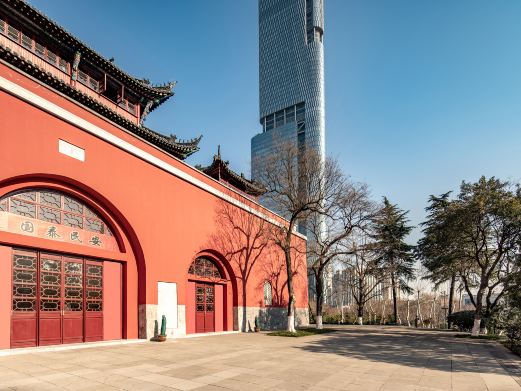The Life-Saving Society was originally established in the 31st year of the Kangxi era (1693), and has a history of over 300 years. In fact, the establishment of the Life-Saving Society can be traced back to the Song Dynasty. As the name suggests, the Life-Saving Society is a charitable water safety rescue organization. Before the Sui and Tang dynasties, the width of the river in Zhenjiang was more than 40 miles, and it was still more than 20 miles wide during the Tang Dynasty. The great Tang Dynasty poet Meng Haoran left behind the verse, ‘The river wind and white waves rise, causing great distress to those at the ferry.’ Every time the wind and waves surged, the cries for help from the boatmen and ferry passengers were particularly heart-wrenching. In the tenth year of the Tianbao era (722), dozens of ferries sank at once; in the sixth year of the Shaoxing era of the Southern Song Dynasty (1136), a ferry that had just left the shore soon encountered a storm, and all 46 passengers, including the helmsman, perished. In the tenth year of the Wanli era of the Ming Dynasty (1582), a fierce wind destroyed thousands of grain ships and civilian vessels. Due to the special transportation and military position of Xitun Ferry, strengthening safety management became particularly important. By the Song Dynasty, rulers regarded Zhenjiang as the throat of grain transport. Thus, the then governor of Zhenjiang, Cai Huang, established the Life-Saving Society at Xitun Ferry. In the late Qing Dynasty, gentlemen from Zhenjiang and Yangzhou initiated the establishment of the Jingkou Life-Saving Society, Guzhou Life-Saving Society, and Jiaoshan Life-Saving Society Headquarters, which were specifically engaged in voluntary salvage of sunken ships and Life-Saving Society affairs. At that time, the life-saving boats were painted red, commonly known as red boats. A tiger head sign was prominently hung on the mast, signifying that they were saving people by the emperor’s decree, and no one could block them when the copper gong on the boat was struck. This situation continued until the end of the Qing Dynasty, when, due to continuous warfare and the decline of people’s livelihoods, the Life-Saving Society could no longer sustain itself and gradually became less effective. In 1923, the gentry of Zhenjiang and Yangzhou once again joined hands to establish the Universal Aid Ferry Bureau and purchased a ‘Universal Aid’ steamship to engage in ferry business, greatly reducing the potential for accidents. By the 1920s, the Life-Saving Society finally completed its historical mission. The Zhenjiang Life-Saving Society, which began in the Song Dynasty, was passed down from generation to generation, and at its peak, even developed in places like Nanjing and Wuhan, making significant contributions. Its scale and far-reaching influence are unparalleled. Opening hours and specific business status are subject to the actual opening conditions of the day.
China Zhenjiang Life-Saving Museum
The Life-Saving Society was originally established in the 31st year of the Kangxi era (1693), and ha[...]









